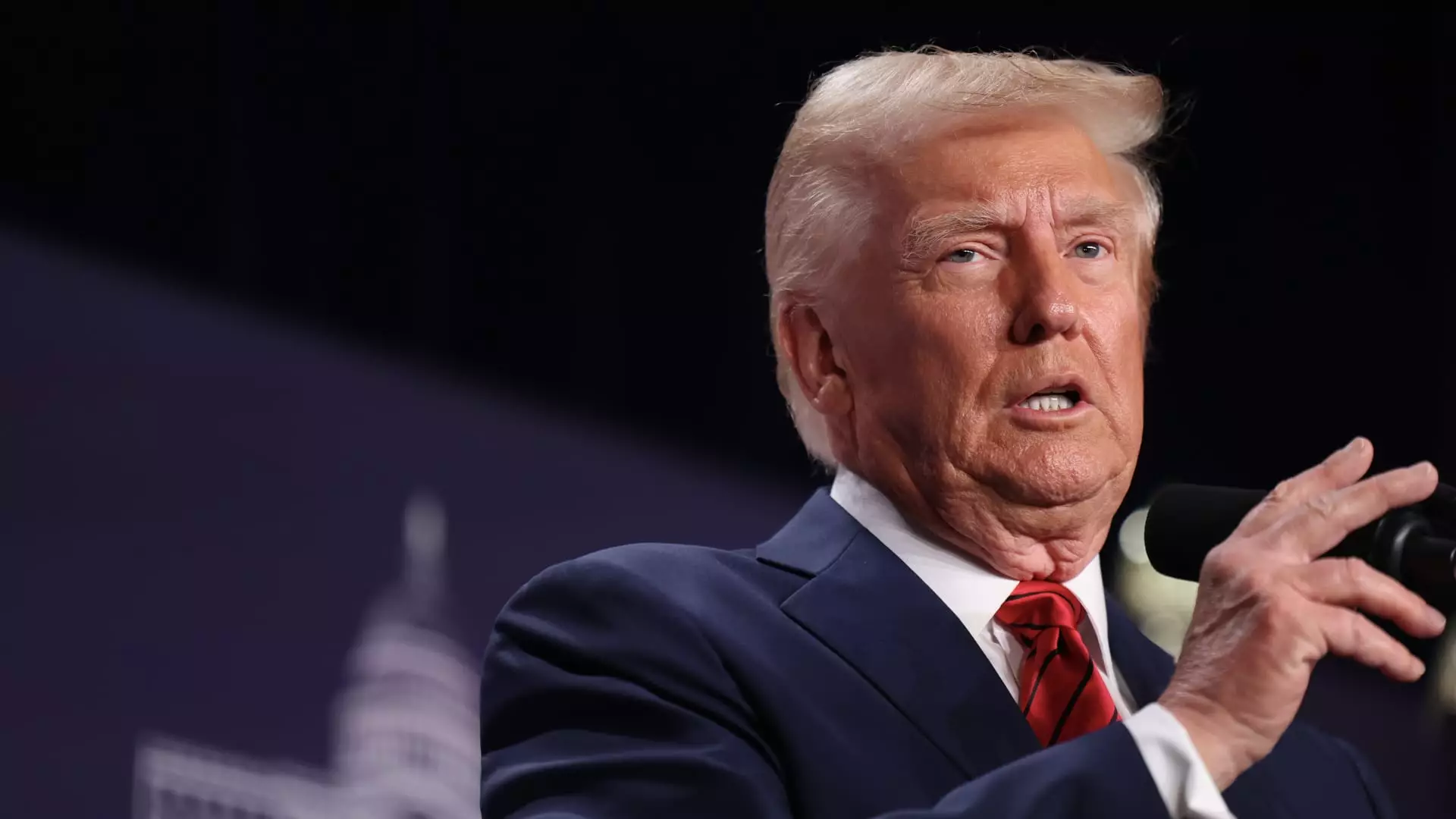The economic landscape of the United States is once again facing a significant shift as President Donald Trump plans to impose new tariffs on goods imported from Canada, China, and Mexico. Set to commence on February 1, the tariffs—25% on Canada and Mexico, and 10% on China—pose profound implications not only for international trade relations but also for American consumers and businesses. Economists are already cautioning about the potential negative repercussions these tariffs may have on the economy, opening up a complex discussion on their potential benefits and pitfalls.
Tariffs are essentially taxes placed on imported goods, and they serve multiple purposes. Primarily, they aim to protect domestic industries from foreign competition by making imports more expensive. The White House justifies these taxes as a mechanism to bolster American jobs and stimulate economic growth. However, the effectiveness of tariffs in achieving these aims is highly contested. For instance, analysis from the Peterson Institute for International Economics argues that such tariffs are likely to burden American consumers with higher prices and fewer choices in the marketplace.
Importantly, businesses that import goods are hit with these additional costs, and they often have no choice but to pass them along to consumers. An increase in the cost of goods due to tariffs can lead to inflationary pressures, thereby eroding buying power. According to Mary Lovely, an economist specializing in trade, the overarching sentiment is that it’s challenging to locate significant advantages arising from these tariffs. “Part of these tariffs will be passed on to consumers,” Lovely notes, suggesting that consumers will feel the burden of these economic policies directly on their wallets.
One of the major gripes about tariffs is the effect they have on consumer choice and pricing. Products that Americans routinely purchase may become scarcer or more expensive as tariffs lead imported goods to disappear from store shelves. In 2022, Canada, China, and Mexico constituted the top three suppliers of imported goods to the U.S., providing substantial amounts of various consumer products. Should tariffs drive up prices, consumers may find themselves facing tough choices as their options narrow.
The potential for increased food prices is another alarming consideration. Mexico and Canada are key suppliers of vegetables and foodstuffs to the U.S., which means tariffs could apply upward pressure on grocery bills. In this respect, consumers may find it harder to sustain their usual spending habits or might have to compromise on the types of products they buy as prices rise.
While the immediate financial strain on consumers is clear, economists warn of longer-term economic pitfalls. Trump’s administration claims that these tariffs will lead to an economic boon, projecting potential job growth and increased wages. However, studies predict that the tariffs could have counter-productive results, resulting in a contraction of the U.S. economy. For instance, estimates indicate that the proposed 25% tariff on Canada and Mexico could shrink GDP by as much as $200 billion.
Furthermore, the likelihood of retaliatory measures from China cannot be overlooked. History suggests that tariffs often trigger tit-for-tat responses, leading to a trade war that exacerbates economic tension. If China retaliates, as it has done previously, this could cut U.S. exports and create further disruptions in the marketplace. Even as some domestic industries might see short-term gains, those gains may come at the expense of others, resulting in job losses.
One of the most persistent myths surrounding tariffs is their efficacy in job creation. While supporters of tariffs often claim they help to bring back jobs lost to overseas competition, economists argue these assertions are “vastly overstated.” For every job created in the steel industry, for example, there are approximately 80 jobs in related sectors that may be impacted negatively by increased costs.
A study indicated that tariffs primarily serve as a double-edged sword; while they can protect a small number of jobs in specific industries, they often lead to collateral damage that outweighs any potential benefits. Therefore, it is crucial to scrutinize the broader job market implications when considering the immediate positives touted by pro-tariff advocates.
As America braves this complicated economic experiment with tariffs, it’s essential to maintain a clear-eyed view of both the potential benefits and drawbacks. While some industries may experience short-term boons, the overarching consensus from economists is one of caution. With the real possibility of increased consumer prices, reduced choices, and potential retaliatory actions from key trading partners, the supposed benefits of tariffs must be critically evaluated against a backdrop of long-term economic health and consumer welfare. In navigating these turbulent waters, it may be prudent to consider alternative trade strategies that foster growth without imposing undue burdens on the very consumers they aim to protect.

